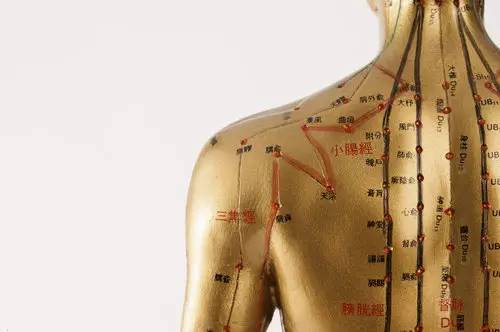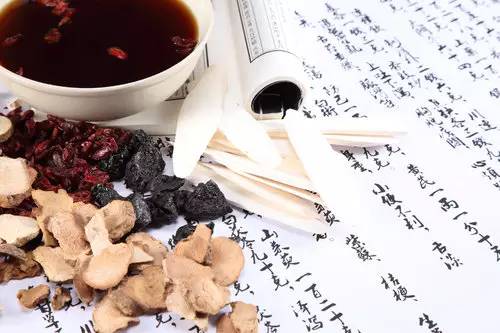
From the patient’s perspective, there are differences in the duration of illness, severity of the condition, strength of constitution, living conditions, and mental state; physiologically, the sensitivity of the meridians varies, as does endurance and determination. Thus, even with the same method, the therapeutic effects can differ.
From the practitioner’s perspective, one must adhere to the theory of meridians, carefully differentiate syndromes, accurately select acupuncture points, and appropriately apply techniques to achieve the desired results.
Based on the above principles, the six key principles of acupuncture can be summarized as follows:
1. Precise Differentiation of Syndromes, 2. Accurate Point Selection, 3. Clear Techniques, 4. Skillful Application, 5. Appropriate Conditions, 6. Emphasis on Consistency.
➤ 1. Precise Differentiation of Syndromes
In clinical practice, treating a specific disease with a specific acupuncture point can sometimes be effective and sometimes ineffective. The underlying reason often lies in the differentiation of syndromes. For example, the acupuncture point Xiàxī (Xiaxi) is renowned for treating dizziness; it is effective for dizziness due to liver yang rising but less effective for dizziness due to blood deficiency or phlegm turbidity.
For simple toothaches, if one does not carefully differentiate the syndrome and relies solely on Hégǔ (Hegu) and Nèitíng (Neiting), treatment may fail. For lower toothaches caused by gingivitis or pulpitis, if one does not select points on the spleen meridian or kidney meridian, merely needling Hégǔ (Hegu) will not resolve the issue.
Thus, using empirical point selection is merely one method and should not be misused. Only through syndrome differentiation can therapeutic efficacy be improved.
The essence of acupuncture lies in syndrome differentiation. Ideal treatment and outcomes stem from clear diagnoses. The selection of acupuncture points and formulas must align with the treatment “principles.” Establishing these principles cannot be separated from the theoretical guidance of syndrome differentiation. Therefore, mastering and applying syndrome differentiation correctly is key to treating diseases with acupuncture.
During the differentiation process, one must first address the relationship between syndrome differentiation and disease differentiation. They appear to align; if there is a disease, there is a corresponding syndrome. However, different diseases often present similar symptoms. For instance, while both may involve lower back pain, one may be due to kidney deficiency, while another may arise from trauma or be caused by wind, cold, dampness, or other diseases.
If the diagnosis is unclear, effective treatment methods cannot be proposed. Relying solely on Wěizhōng (Weizhong) will not yield satisfactory results. Therefore, one must differentiate both syndrome and disease. Syndrome differentiation includes both observed signs and internal and external pathogenic factors, as well as the location of the disease. Thus, a comprehensive and specific judgment of the unique nature and primary contradictions of the pain at this stage is necessary.
Disease differentiation involves comparing the differentiated syndromes with various similar diseases. This way, one can accurately grasp the essence of the disease, identify and resolve the primary contradictions, and avoid being misled by superficial appearances. Additionally, one must flexibly grasp the relationship between the root and branch of the disease, closely monitor the transformation of symptoms, and provide reliable evidence for treatment.

➤ 2. Accurate Point Selection
Inaccurate point selection may lead to failure to achieve the desired sensation and effects. If the acupuncture point is not accurately located, even the most skillful technique and the best formula will be ineffective.
Some acupuncture points can only be accessed using special methods. For example, when needling the Gāohuāng (Gaohuang) point, the scapula must be properly positioned to access the correct point. When needling the Lǎo (Lao) point, the hand must be turned towards the chest to access the correct point. For back shu points, if one does not carefully palpate the vertebrae, they may not be accurately located; relying solely on visual observation can lead to errors. Therefore, it is essential to be familiar with the pathways of the meridians and the locations of the acupuncture points, as well as some special methods for locating these points; this is fundamental for acupuncture practitioners.
Additionally, when selecting acupuncture points, one should strive for simplicity and precision, avoiding complexity. Necessary points should be used, while unnecessary ones should be omitted. Ideally, one needle should suffice for treatment. However, for complex cases, it may be necessary to use seven or eight points or more, depending on the condition.
If one needles blindly, there is a risk of exacerbating the condition. For example, in cases of trigeminal neuralgia, needling randomly at the site may intensify the pain. If the technique for needling the Jīliáo (Jiliao) point is incorrect, it may worsen the pain of sciatica.
Moreover, the selection of points on the left and right sides, whether to needle bilaterally or unilaterally, and whether to select points on the healthy or affected side must be accurate and appropriate to be effective. The selection of left and right points must depend on the meridian imbalances presented by the disease, selecting points that most easily restore relative balance to the meridians. For instance, if there is pain in the right leg and examination reveals that the right Shàoyáng (Shaoyang) meridian is in excess while the left is deficient, then when needling Yánglínquán (Yanglingquan), if using a tonifying method, one may needle the left Yánglínquán (Yanglingquan); if using a draining method, one may needle the right Yánglínquán (Yanglingquan). If needling bilaterally, one may tonify the left and drain the right.
In complex cases where multiple meridian disorders occur, or false syndromes or similar symptoms arise from different meridians, one must not hastily needle based on the disease. Careful meridian examination and syndrome differentiation must be conducted to provide a basis for point selection.
➤ 3. Clear Techniques
When needling, one must apply the correct tonifying and draining techniques to balance yin and yang, qi and blood, and the deficiencies and excesses of the meridians to achieve therapeutic goals. If the techniques are unclear, it is difficult to achieve good results.
Obtaining qi under the needle is the primary condition for applying tonifying and draining techniques. If qi is not obtained, the techniques cannot be applied, and the cause must be identified. If it is due to inaccurate point selection, one must promptly correct the direction, angle, and depth of the needle; if it is due to the patient’s constitution or condition, one may use manual stimulation along the meridian to encourage qi to flow. Some patients may have a poor response to needling; in such cases, the practitioner must rely on the fingertip to sense the condition under the needle. If the needle feels tense, it indicates that qi has been obtained.
During the procedure, the practitioner must concentrate, mastering the timing of needling, the sensation under the needle, the amount of stimulation, and the patient’s response. Carelessness or mechanical, blind application of ineffective techniques should be avoided.

➤ 4. Skillful Application
In clinical practice, the selection of acupuncture points and formulas should be flexible and adaptable, adjusting combinations as needed.
For example, for stomach pain, the formula may include Zhōngwǎn (Zhongwan), Zú Sān Lǐ (Zusanli), and Nèiguān (Neiguan).
If the pain extends to the lower abdomen and chest, liver meridian points should be included; if there is bloating, poor appetite, or digestive issues, spleen meridian points should be selected. Adjusting points according to the pathophysiology is significantly more effective than rigidly adhering to the main points. For empirical formulas, one should not mechanically apply them; they must align with syndrome differentiation and pathophysiology. For instance, Rén Yíng (Renying), Tàichōng (Taichong), and Hégǔ (Hegu) are effective for treating dizziness due to liver yang excess, but may not yield results for dizziness due to kidney yin deficiency or phlegm turbidity. Even if symptoms are temporarily alleviated, the effect may not be lasting.
Furthermore, the number of points selected, the order of needling, and the intensity of stimulation must be carefully considered to maximize therapeutic effects. Before and after each treatment, one must carefully examine the changes in meridian imbalances to provide reliable evidence for treatment. This is an essential aspect of improving efficacy.
➤ 5. Appropriate Conditions
While acupuncture is widely applicable, it has its indications. Blindly needling for non-indications or contraindications not only fails to utilize acupuncture’s therapeutic potential but also damages its credibility and true value.
The selection of indications is the foundation for achieving therapeutic effects. The degree of efficacy varies with the type and severity of the disease. Acupuncture is suitable for functional disorders.
It also has certain efficacy for some organic diseases, such as optic nerve atrophy and post-polio syndrome. It can be effective for chronic inflammation, infectious diseases like bacillary dysentery, whooping cough, hepatitis, and parasitic diseases like malaria and ascariasis.
Contraindications include severe organic lesions, malignant skin diseases, hemophilia, sepsis, blood loss or anaphylactic shock, acute peritonitis, gangrene, and malignant febrile diseases. However, in cases where treatment is necessary or possible, acupuncture may still be used as a holistic or adjunctive therapy. For instance, in cases of qi and blood deficiency without complete depletion of body fluids, moxibustion may still yield certain effects.

➤ 6. Emphasis on Consistency
“How many times of acupuncture will it take to heal? Can it be cured? If cured, can it recur?” Patients often ask such questions in clinical practice.
Providing an accurate answer is indeed challenging. If one does not comprehensively grasp the relationship between the positive and negative aspects, the patient’s internal and external conditions, and the appropriate treatment methods, it becomes even more difficult for the practitioner to respond.
Achieving therapeutic effects requires diligent effort from both the practitioner and the patient. Especially for difficult and chronic conditions, treatment cannot be achieved overnight; persistence is key. Acupuncture treatment aims to adjust and stimulate the body’s resistance to disease. The generation or enhancement of this resistance requires time and conditions.
Therefore, both the practitioner and the patient must create favorable conditions to stimulate this resistance. If the stimulation is effective, the therapeutic effect will be good; if not, the effect will be poor. Practitioners must refine their techniques and be enthusiastic about their patients. Patients must closely cooperate, follow medical advice, accept treatment, and strengthen their physical fitness. They should not stop treatment due to temporary ineffectiveness.
If there is no improvement after several treatment cycles, the treatment plan should be re-evaluated to determine its correctness.
If incorrect, modifications should be made; if correct, treatment should continue as prescribed until the resistance is strengthened, at which point results will be seen.

